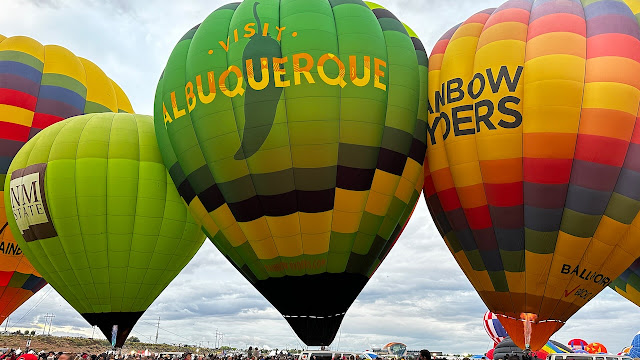After years of talking about going to the Albuquerque Balloon Fiesta we finally made if happen in 2022. The Albuquerque Balloon Fiesta is the world's largest hot air balloon festival. Our first event to see was the much anticipated Night Glow. So, as the sun began to set, the excitement in the air was palpable. Everyone was eagerly waiting for the launch and night glow to begin.
The balloons are illuminated from within, and the effect was simply breathtaking. It felt like the entire field was aglow with light and color.
After the night glow, the launch began. The balloons drifted up into the sky in a slow and elegant procession. The sight of balloons soaring into the air at once was truly awe-inspiring. As they ascended higher and higher, the sky became a canvas of vibrant colors and swirling patterns.
We were lucky to have a the rain stop for a day with great weather conditions, making the mass ascension even more magical. Seeing so many balloons in one place was something that I had never experienced before, and it was truly magical to see them all take off at once, seemingly dancing in the sky. As they gently drifted upwards, it was as if the world was suspended in time, with only the colorful balloons filling the air. The mass ascension was a vivid reminder of how truly breathtaking hot air balloons can be and just how beautiful it is when hundreds of them fill the sky simultaneously. It was a truly unforgettable experience, and one that I will undoubtedly remember for many years to come.
Overall, the Albuquerque Balloon Fiesta is an unforgettable experience and one that should be on every traveler's bucket list. From the colorful balloons to the stunning New Mexico landscape, it's a festival that truly has something for everyone.






Comments
Post a Comment